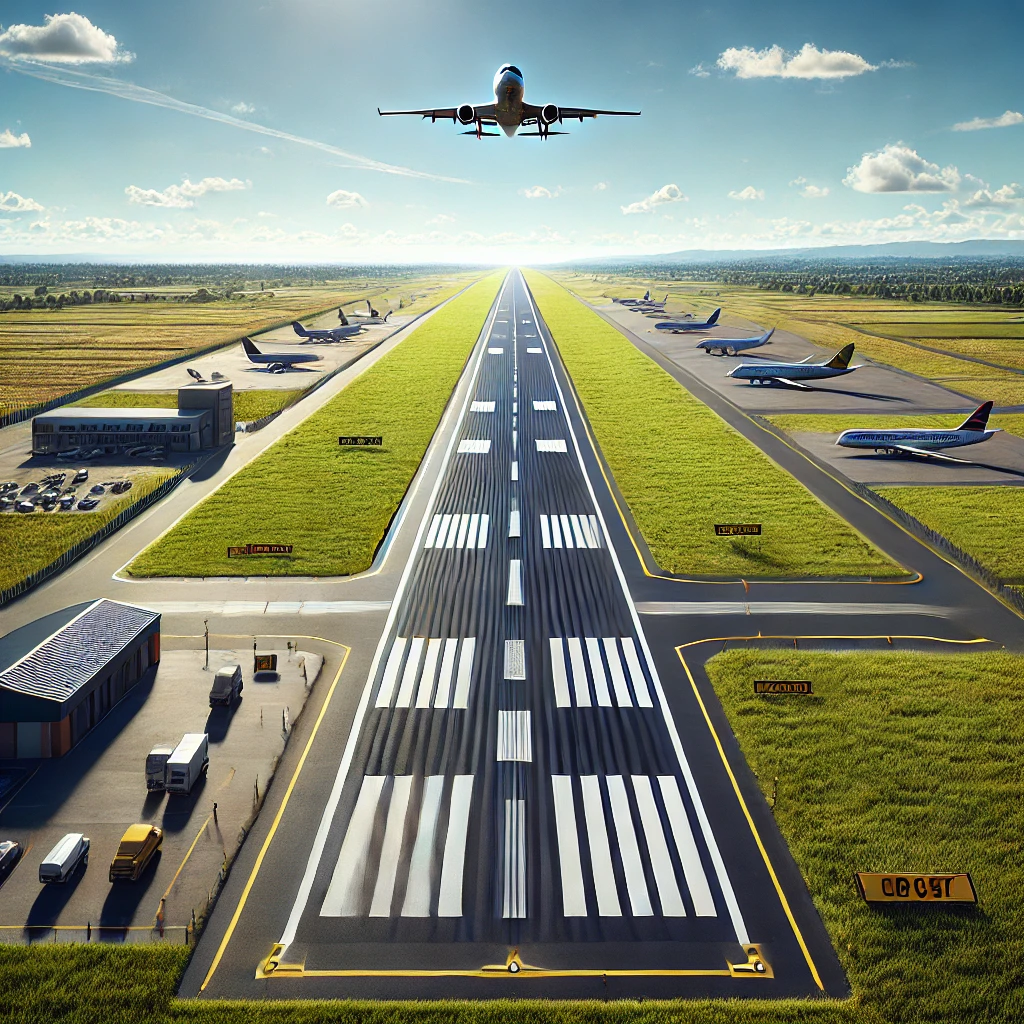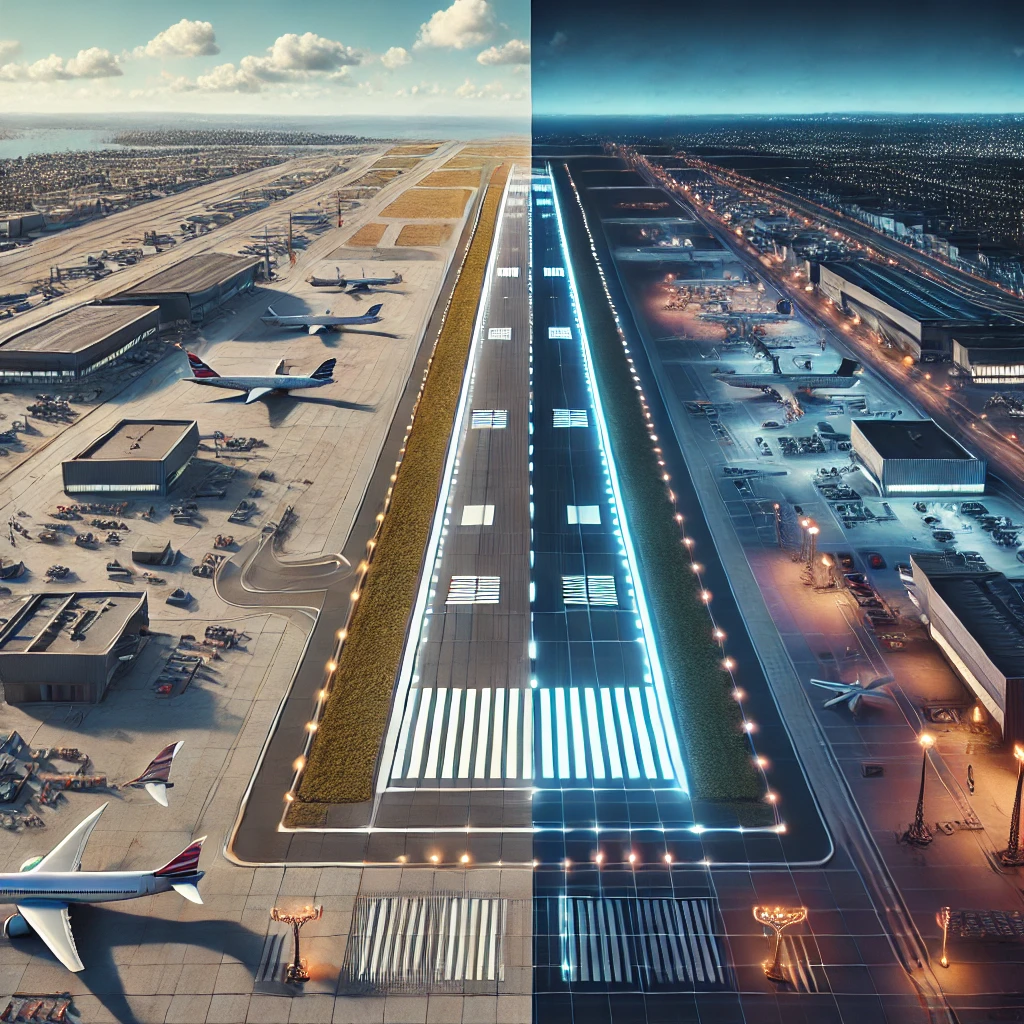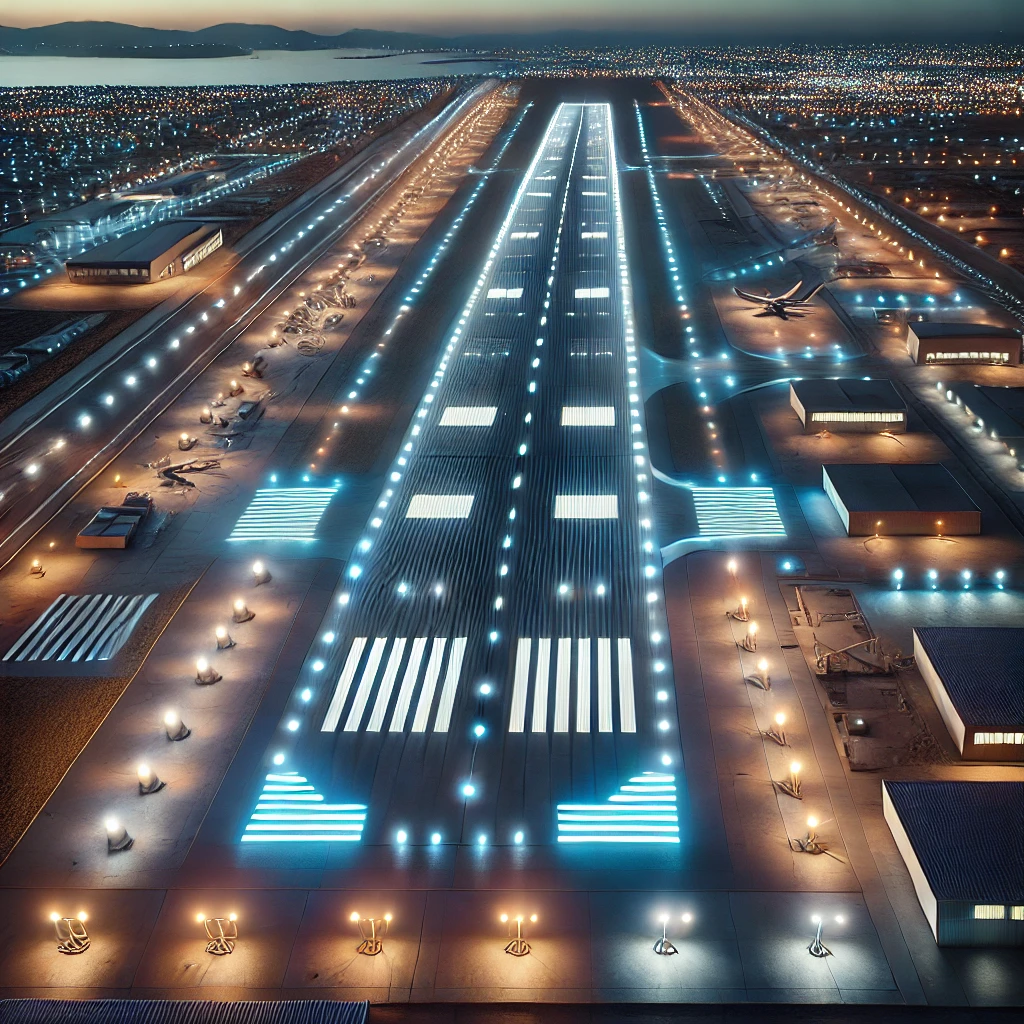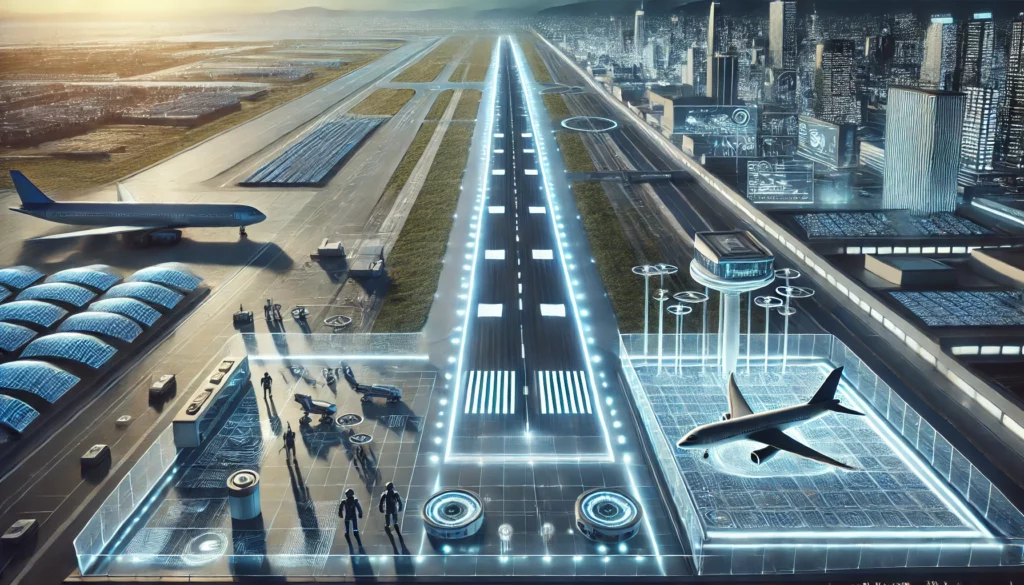Runway For Airplanes In Flight Simulator – Mastering Virtual Flight Dynamics:

Runways in flight simulators might seem simple at first glance, but they’re crucial to creating a realistic flying experience. When you’re starting out with flight simulations, understanding what makes runways tick can make a big difference in how you approach your virtual flights. Whether it’s your first time booting up the simulator or you’re getting back into it, knowing the function and significance of runways helps build a more immersive and educational experience.
In the bustling world of aviation, every runway is a marvel of precision engineering, tailored to diverse aircraft and stringent safety norms. The virtual skies of flight simulators echo this meticulous design, albeit with a digital twist. Here, the art of runway design must harmonize with the technical limits of computing power, ensuring every virtual strip not only looks the part but plays it well, too. This fusion of the tangible and digital realms equips you with the knowledge to navigate the array of airports dotting the simulated globe, enriching your flying adventure. Explore the FAA guidelines on airport design to understand how real-world standards influence virtual runway configurations.
It’s also helpful to get familiar with some basic runway lingo. Words like ‘threshold’, ‘taxiway’, and ‘runway markings’ will crop up often, and knowing what each term means gives you a head start in refining your simulator skills. Runway thresholds mark the beginning of the usable surface for landing, taxiways connect different parts of an airport, and runway markings guide take-off and landing maneuvers. These terms aren’t just jargon; they are your guideposts in the virtual aviation environment. For a deeper dive into runway and aviation terminology, check out this comprehensive glossary provided by the Aircraft Owners and Pilots Association.
Understanding these nuances not only enhances your enjoyment but also builds your confidence as you’d know what to expect and how to respond during your simulation sessions. So, whether you’re practicing take-offs or perfecting landings, having a grasp on what runways entail is key.
Designing Runway Layouts: Realism vs. Simulation Necessities:

Creating runway layouts in flight simulators is a fascinating blend of art and science. When developers build these virtual environments, the aim is to mirror real-world runways as closely as they can, but there are always differences due to the nature of simulations. Realism is a huge factor, but it’s equally important to ensure players have a smooth and enjoyable flight experience.
In the world of simulations, runway designs aren’t just about aesthetics. Developers work to balance the realistic portrayal of runways with the performance capabilities of your computer or gaming console. Too much detail can slow down the system, while too little can detract from the immersion. Selecting the right balance is crucial for ensuring that the simulation runs smoothly and remains engaging.
An essential part of creating these runways is focusing on player immersion. Realistic details like runway markings, placements, and even surrounding airport areas enhance the feeling of being truly in the cockpit. These layouts are crafted to create a sense of relation and familiarity for users, especially those who may have flown from these locations in real life.
Yet, the quest for visual splendor doesn’t always win out in the world of simulations. Practicality often takes precedence, requiring compromises to ensure smooth gameplay. Simplifying runway details becomes essential when the digital skies grow crowded or storms brew, all to keep the simulation running flawlessly on your setup. It’s a delicate balancing act between aesthetic allure and operational efficiency, critical for maintaining an immersive experience even in the most demanding conditions.
For users, understanding these design choices gives a better appreciation of the experience. It’s all part of what makes flight simulation both a technical and creative field. When taking off or landing, you’ll have a different experience compared to what you might find in real life, but knowing why can add to your appreciation for the craft behind flight sim development.
Technical Aspects of Runway Surface and Lighting in Simulators:

At first glance, runway surfaces in flight simulators seem simple, yet they hold the key to a truly authentic flying experience. The choice of surface—be it asphalt, concrete, or even a grassy strip—profoundly influences how your aircraft responds during critical moments like takeoff and landing. Beyond the visual, simulators delve deep into how these materials dictate performance, crafting scenarios that challenge your piloting skills and mirror the complexities of real-world aviation.”
These adjustments enhance the descriptive quality of your content, injecting a narrative flair that captures the reader’s interest while explaining complex concepts. This approach not only aligns with a brand that values depth and detail but also makes the technical aspects of flight simulation more accessible and engaging to readers. If there are more sections or specific elements you’d like to refine further, feel free to point them out!
Lighting is another technical element that adds depth to simulations. Proper lighting is imperative for night-time and low-visibility flights, guiding you safely to your destination. In the simulator, lights aren’t just for show. Each set of runway lights serves a specific purpose—from guiding you down the centerline to providing visual cues for landing approaches. Knowing these lighting elements can transform your virtual flight experience, especially when weather conditions challenge your skills. Learn more about these textures on REX Simulations.
Moreover, one of the standout features of many modern simulators is their ability to replicate varying weather effects on runway surfaces, like rain or snow, altering the grip and safety conditions for the aircraft. This added realism lets you experience the intricacies of flying under different conditions, further refining your skills and understanding of aviation procedures.
Appreciating these technical elements doesn’t just make you a better virtual pilot; it opens the door to deeper interactions with the flight simulation community. You’ll be able to discuss and understand the complexities faced by real pilots while being comfortably seated at your desk. Embracing these aspects broadens your virtual flying horizons, making every take-off and landing feel like a learning opportunity.
The Physics behind Aircraft Take-offs and Landings in Simulators:

Runway length and surface type are key factors in flight simulation. They determine how an aircraft gains speed and achieves lift-off or how it decelerates upon landing. Understanding these elements is crucial for mastering take-off and landing techniques. In simulators, these variables are accurately modeled, allowing users to experience the physics of flight in a controlled environment.
Simulators are designed to mimic real-world flight dynamics, meaning that pilots have to adjust their approaches based on runway length and aircraft weight. For instance, a shorter runway requires a steeper approach and precise braking techniques. Grasping these concepts can vastly improve your simulation experience and prepare you for real-life scenarios if that’s your goal.
Simulators offer a safe space to practice handling different take-off and landing scenarios, providing insights into factors such as wind speed, direction, and aircraft weight. This hands-on learning helps to understand the importance of these elements during flight, while mistakes can be examined and corrected without real-world risks involved.
Having a grasp of these physics principles not only enhances gameplay but also provides a deeper appreciation of aircraft operations. Engaging with simulators in this way fosters a better understanding of what pilots face during each flight, from routine take-offs to challenging landings, enhancing both virtual and practical comprehension.
Enhancing User Experience: Interactive Tutorials and Scenarios with Runways:

Flight simulators have evolved to offer engaging ways for users to learn, particularly with runway operations. Interactive tutorials are one of the most effective features for mastering the art of take-offs and landings, catering to both newcomers and those looking to sharpen their skills.
These educational scenarios often involve guided experiences where the simulator walks you through each step of runway procedures, explaining nuances like aligning with the centerline or managing speed for safe landings. Users gain the skills needed for more realistic and challenging flying experiences. This interactive guidance is invaluable, especially for beginners who may find the initial learning curve steep.
Scenarios that incorporate varying weather conditions or air traffic introduce a dynamic element, making the experience feel alive and responsive. By practicing these different scenarios, users develop an intuitive understanding of how runways function in less-than-ideal conditions. This not only enhances skill sets but also builds confidence in tackling a variety of flying situations.
By integrating traffic elements and realistic weather conditions, simulators create a lively experience. These scenarios don’t just teach technical skills but offer a broader understanding of real-time decision-making required in aviation. Embracing these exercises transforms flight simulations into an insightful exploration, revealing the intricacies of runway use under different scenarios.
These designed experiences are not just about improving proficiency. They instill a deeper empathy for the complexities faced in real aviation environments. Interacting with these structured experiences equips you with the knowledge to appreciate both the technical and human elements involved in successful flights. Enhance your skills with this interactive webinar on runway navigation and landing techniques.
Future of Runway Simulations: Innovations and Emerging Trends:

The world of flight simulation continuously evolves, with new technologies reshaping how users interact with and perceive simulated runways. Emerging trends reveal an exciting future, driven by advancements like virtual reality and augmented reality, which promise to elevate realism and immersion to unprecedented levels. As these technologies become more sophisticated, they enhance the sensory and intuitive elements of flying.
Another significant trend is the integration of artificial intelligence to simulate real-time air traffic and runway conditions. AI algorithms can dynamically adjust scenarios, creating more unpredictable and realistic environments. This not only enhances the realism but also offers educational value, as users learn to adapt to varied and dynamic conditions, just like real-world pilots do.
As simulators harness increased computing power, expect more detailed and complex runway environments. Improved graphics and physics engines bring finer visual details and more nuanced aerodynamic interactions. These advancements make simulators a powerful tool for learning and recreation, offering more depth and versatility than ever before.
Developments in networking technology mean that collaborative and competitive multiplayer environments are more viable, connecting users worldwide. These networks allow users to engage in shared flight experiences, exchanging knowledge and honing skills together, regardless of geographical location. Such community-driven developments push the boundaries, attracting a wider range of users and fostering a rich ecosystem of shared strategies and experiences.
These innovations not only add layers to the simulation experience but also help create a more connected community. As these trends continue to develop, they shape a future where simulators become even more integral to aviation training and enthusiast circles, offering unprecedented levels of detail and engagement. In this burgeoning field, staying informed about these trends ensures you are always ready to experience the next leap in virtual aviation. Discover how emerging technologies are transforming flight simulation in this detailed article on Virtual Reality advancements in aviation.

Hi, this is an interesting topic, but I may be misunderstanding your claim for the shortest runway in the world. There are many runways worldwide that are much smaller. For instance, the Juancho E Yrausquin Airport claims their runway is the shortest in the world available for commercial use at 1,312 feet long (almost a factor of 10 shorter than what is listed in your article). What am I missing about this statement?
Based on the information I found in the internet. Those runways are in large airports.
It amazes me how they figure how much runway is needed for certain types of planes. The logistics of it all is quite fascinating. I wonder how many wrecks are caused by insufficient runway length or safe height protocols. I also wonder how different aircraft runways are from highways in regards to the cement and pavement quality. I remember watching a movie where pilot successfully landed an aircraft in the Hudson River to save hundreds of lives. Maybe you can write about this event and how this was possible in another post?
Thanks for the comment. I will think if I want to post about the event when aircraft landed in Hudson river.
I was not aware that the aircraft length is important. I just thought that you should have enough space for an aircraft to land. Well, you learn something new everyday. I will be sure to share this article with friends and family as I believe that they will find it interesting. Quick question, can the landing space be longer?
The landing space can be longer for larger aircraft.
I have found your post very useful. Thank you for helping me how long a runway should be depending on the airplane. There are a lot of different types of planes so, not all runways are useful for all of them. It was also nice to learn about the eight runways in Chicago O’Hare international airport. I didn’t know about this!
Thanks for the feedback. Aircraft runway length requirements are important for aircraft to land safely.
I found this article fascinating, although very technical. You went through a lot of effort to educate your reader on the factors used to determine the length as well as the width of the runways.
Since I live in Los Angeles, I decided to check these details about LAX. There are 4 parallel runways. I already knew that having flown in and out countless times. What I didn’t know were the runway dimensions. Here is what I found.
The lengths are as follows: 8,926′, 10,285′, 12,091′ and 11,095′ in that order. All are 150′ wide except the last which is 200′.
All kinds of aircraft land and take off at LAX. I was surprised that they are all not the same length. Does this mean that the largest aircraft like the Airbus 380 and the Boeing 747 can only land on the longer and wider runway?
Thanks.
Edwin
Yes Airbus 380 and Boeing 747 can land on longer and wide runways.